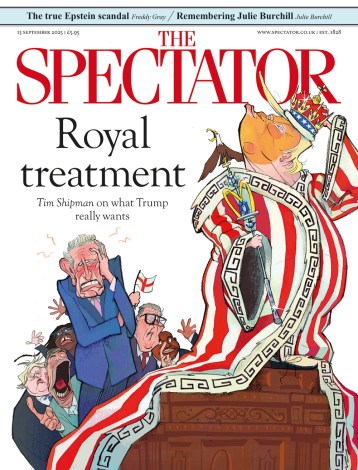The Conservative party is no longer the party of the rich, while the Labour party is no longer the party of the poor. That is the central finding of my new report for the Joseph Rowntree Foundation (JRF).
Boris Johnson is certainly a prime minister under pressure. Public disapproval of his government is drifting upwards. Public confidence in the economy has collapsed. Johnson’s approval ratings have shed more than 20 points in just two months. MPs openly complain about the workings of his government. And, for the first time, when voters are asked who they think would make the ‘best prime minister’, Labour’s Keir Starmer is now in first place.
In fact, as I write this Starmer is enjoying the highest rating for any opposition leader since Tony Blair was transforming Labour into New Labour in 1995 and (What’s the Story) Morning Glory was topping the charts. But look beneath the surface and far more profound changes are also taking place – changes that will ultimately determine not only what happens at the next election but, potentially, many elections after that.
Britain is in a state of realignment. As professor Oliver Heath and I show, things are now happening in Britain which have simply never happened before. The Conservative party is more popular with people on low incomes than it is with people on high incomes. Labour, the party that was founded to speak for struggling workers, is now just as popular with the wealthy as it is among people on low incomes. Both of Britain’s two main parties have inverted their traditional support base. This is, put simply, remarkable.
As recently as 2017, Labour still led the Conservatives among people on lower incomes, as it has always done. But at the general election six months ago Boris Johnson and his party overturned this unwritten rule. The Conservatives established a striking 15-point lead over Labour among one of Labour’s core groups. This is the first time in Britain’s recorded history that the Conservatives outpolled Labour among low-income voters.
Much of this new support for Boris Johnson has come direct from Labour, which is why Johnson was able to tear down Labour’s Red Wall. Six months ago, Labour lost nearly one in three of its low-income voters who had turned out to vote Labour in 2017.
Meanwhile, Johnson and his party have hoovered up votes from working-class people, pensioners and people who left school after taking their GCSEs, at sixteen or seventeen, while they lost ground in areas that contain large numbers of young voters, graduates and people from minority ethnic backgrounds.
Johnson has been winning over the small towns and industrial heartlands but he has been losing the cities, university towns and highly diverse areas; of Labour’s 50 strongest results in December nearly half (22) came in London while highly diverse and/or young urban areas such as Bradford, Birmingham, Manchester and Sheffield hosted many of the others.
And these shifts are reflected in the polls today. Ask Brits who would make the best leader and Starmer leads Johnson by a striking 44-points among Remainers, 24-points among 18-34-year-olds, 19-points among Londoners, 12-points among people who live in cities and 3-points among middle-class professionals.
But Johnson leads Starmer by 46-points among Leavers, 19-points among pensioners, 10-points among the working-class, 6-points in non-London southern England, 5-points among voters who live in seats that Labour has lost since 2005, 5-points in rural areas and 2-points in towns.
What these numbers reflect is how broader winds are sweeping through Britain’s political system and pushing it into a state of ‘realignment’.
Why is this happening?
As we show in the report, the reality is that lots of people who live on average or lower than average incomes are ‘cross-pressured’ – they lean to the left on the economy, favouring more redistribution, but lean to the right on culture, supporting Brexit and the reform of migration. They do not fit neatly onto the traditional map of British politics.
These voters want power sent down to the regions, not up to London and the big cities. They feel that the economy is rigged, that multinationals should pay their taxes and we should do more to redistribute from the wealthy to average workers and the poor.
They also wanted to see a much tougher reply to the unilateral tearing down of statues. In short, they want a bit more economic security as well as a bit more cultural security. This is the new winning formula in British politics, as I have been arguing for five years.
Boris Johnson successfully tapped into this by leaning left through promises to deliver more infrastructure and help the ‘left behind’ while leaning right by promising to deliver Brexit and change immigration rules. Labour, in contrast, went in the other direction.
As we show in the report, Labour’s drift to support a second referendum on Brexit damaged the party among these low-income voters who noticed the shift. This handed Johnson the keys to the Red Wall. Most of those who switched to him were strongly pro-Brexit and wanted to see their decision carried through and implemented by their representatives.
Johnson also had another in-built advantage – more than 60 per cent of constituencies had favoured Leave at the 2016 referendum. This meant that so long as he and Dominic Cummings were focused on consolidating the Leave vote they had some big aces up their sleeves. This was further underlined by the failure of Remainers to find unity, being split between Labour, the Liberal Democrats and the Greens.
So, where do we go from here?
Johnson needs to tread carefully, for obvious reasons. Many of the same people who switched over to him six months ago also come from those groups that have been hit the hardest by the double crisis that Johnson has struggled to manage – the Covid-19 health crisis and the accompanying economic crisis.
There is not yet much evidence that they are jumping ship. Perhaps they are willing to give Johnson benefit of the doubt until the end of the Brexit transition period, until immigration numbers start to fall and until the government starts to more actively defend Britain’s culture and heritage.
But all of this underlines how things could also start to go wrong for the prime minister. What if immigration numbers do not come down? What if, amid a major economic crisis, these voters start to prioritise their wallets over their values and do not believe that he is doing enough to level up the regions? And what if Conservative MPs – who are far more right-wing economically than most of their new voters – do not want to meet the losers of globalisation halfway? The answers to all of these questions could yet cause Johnson big problems.
Keir Starmer has challenges, too. Winning adulation in London and the university towns – or ‘Remainia’ – is fine. But Labour already holds much of this territory. To return to power, and given the SNP’s dominance in Scotland, Starmer also needs to make serious progress in non-London England, where lots of voters are instinctively socially conservative and wary of the new turn toward identity politics.
It is worth remembering that Labour has not won the popular vote in England since 2001. Let me say that again: by the time of the next election Labour will not have won the popular vote in England for more than twenty years.
So there are also huge challenges for Starmer’s team. Blair managed to crack this nut by promising to be ‘tough on crime and tough on the causes of crime’ – he hoovered up the professional middle-classes while giving the more instinctively socially conservative working-class a message that resonated.
But that was also before the values-ridden debates of today, with debates over migration, Brexit, gender, statues, the legacy of empire and who-knows-what-is-next shooting up the agenda.
Starmer will need to find his own way of navigating our values divide. But find a way he must if he is serious about winning the next election.
So is Britain’s realignment temporary or permanent? Can Boris Johnson retain his support in the Red Wall? Will a new ‘New Deal’ cement his relationship with these voters? Or can Starmer begin to repair Labour’s relationship with low-income, blue-collar and cross-pressured voters? Only time will tell. And for Johnson, especially, the clock is ticking …






Comments